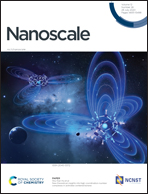Tumor cellular membrane camouflaged liposomes as a non-invasive vehicle for genes: specific targeting toward homologous gliomas and traversing the blood–brain barrier †
Abstract
Gene therapy aimed at malignant gliomas has shown limited success to date due in part to the inability of conventional gene vectors to achieve widespread and specific gene transfer throughout the highly disseminated tumor zone within the brain. Herein, cationic micelles assembled from vitamin E succinate-grafted ε-polylysine (VES-g-PL) polymers were first exploited to condense TRAIL plasmids (pDNA). Thereafter, the condensed pDNA was further encapsulated into liposomes camouflaged with tumor cellular membrane. The condensed pDNA was successfully encapsulated into the inner aqueous compartments of the liposomes instead of the surface, which was proved based on the TEM morphology and decreased cytotoxicity toward HUVEC and PC-12 cells. Moreover, glioma cell membrane (CM) was easily inlaid into the lipid layer of the pDNA-loaded liposomes to form T@VP-MCL, as shown via TEM, AFM, and SDS-PAGE analysis. T@VP-MCL exhibited good particle size stability at strong ion strength and effectively protected pDNA from DNase I induced degradation. Owing to the CM-associated proteins, T@VP-MCL specifically targeted not only ICAM-1 overexpressed in glioma RBMECs but also homogenous glioma cells. Moreover, in vivo imaging showed that T@VP-MCL was effectively located in orthotopic gliomas of rats after intravenous administration, resulting in effective tumor growth inhibition, prolonging the lives of the rats. The mechanism of T@VP-MCL traversing the BBB was highly associated with the down-regulation of the tight junction-associated proteins ZO-1 and claudin-5. Conclusively, T@VP-MCL designed herein may be a potential carrier for therapeutic genes.



 Please wait while we load your content...
Please wait while we load your content...